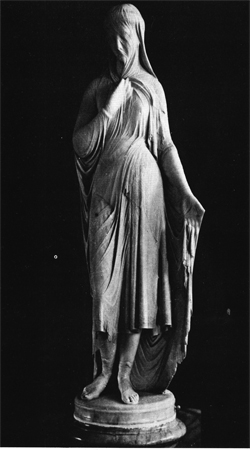 The name of Salar Jung immediately conjures up visions of priceless
antiques that constitute one of the largest private collections in the world.
Though credit for amassing the collection goes to Salar Jung III, the
beginnings were made by his grandfather and father.
4
Salar Jung Ill became known the world over as a discerning collector
of antiques. Art dealers all over the world looked upon him as one of their
best customers.
The name of Salar Jung immediately conjures up visions of priceless
antiques that constitute one of the largest private collections in the world.
Though credit for amassing the collection goes to Salar Jung III, the
beginnings were made by his grandfather and father.
4
Salar Jung Ill became known the world over as a discerning collector
of antiques. Art dealers all over the world looked upon him as one of their
best customers.
Thus, though quite a few items were inherited from his
grandfather and his father, the major portion of the collections in the
museum was acquired by Salar Jung III. It is after him that the museum
has been named.
Salar Jung III was not only a great collector of antiques but also a
patron of poets, writers, artists. He enthusiastically encouraged sports and
cultural activities.
Salar Jung died a bachelor on March 2nd, 1949, leaving
behind him a priceless collection of art objects, rare manuscripts and
paintings from all over the world.
The family of Salar Jung was held in such high regard by the Nizams
of Hyderabad, that two other members of it were appointed Prime Ministers, Mir Alam (1804—1808) and Munir-ul-Mulk, (1809—1832). Five Prime Ministers thus belonged to this illustrious family. Their 100-year—old palace, which contained more than one hundred rooms, came to be popularly known as the Diwan Devdi, or “Mansion of the Prime Minister”.
The Salar Jung Museum was originally housed in the Diwan Devdi. It was shifted to the present building in 1968. The unassuming facade of the present building, which stands on the banks of the Musi, belies the treasures it holds. Inside, one is immediately struck by the exotica of Asia’s largest one-man collection. The museum attracts nearly ten lakh visitors annually.
There are 43,000 art objects and 50,000 books in the museum. Though educated informally, Salar Jung Ill built up an enormous library consisting of 9,000 manuscripts and 47,000 printed books. The language and subjects range from Pushto to Persian and religion to sex.
Among the noted items in the museum two of the best pieces are the “Veiled Rebecca,” a delicate marble statue of a woman seen through her veil, and “Marguerite and Mephistopheles”, a double figure wood carving done in 1876 by G.B.Benzoni, a neo-classic sculptor of Milan.
More than 80 original European paintings are displayed on the first floor. Some of the exhibits which leave visitors spellbound are the Japanese silk paintings, the handwritten miniature Quran, carpets woven in metallic ivory threads, 300 walking—sticks, English wine glasses, Nur Jehan’s dagger, Jahangir’s wine cup, and Aurangzeb’s sword in the Jade Room.
The Salar Jung Museum was declared as an “institution of national
importance” by an Act of Parliament in 1961. Salar Jung will be long remembered for his antique collection.
|
|